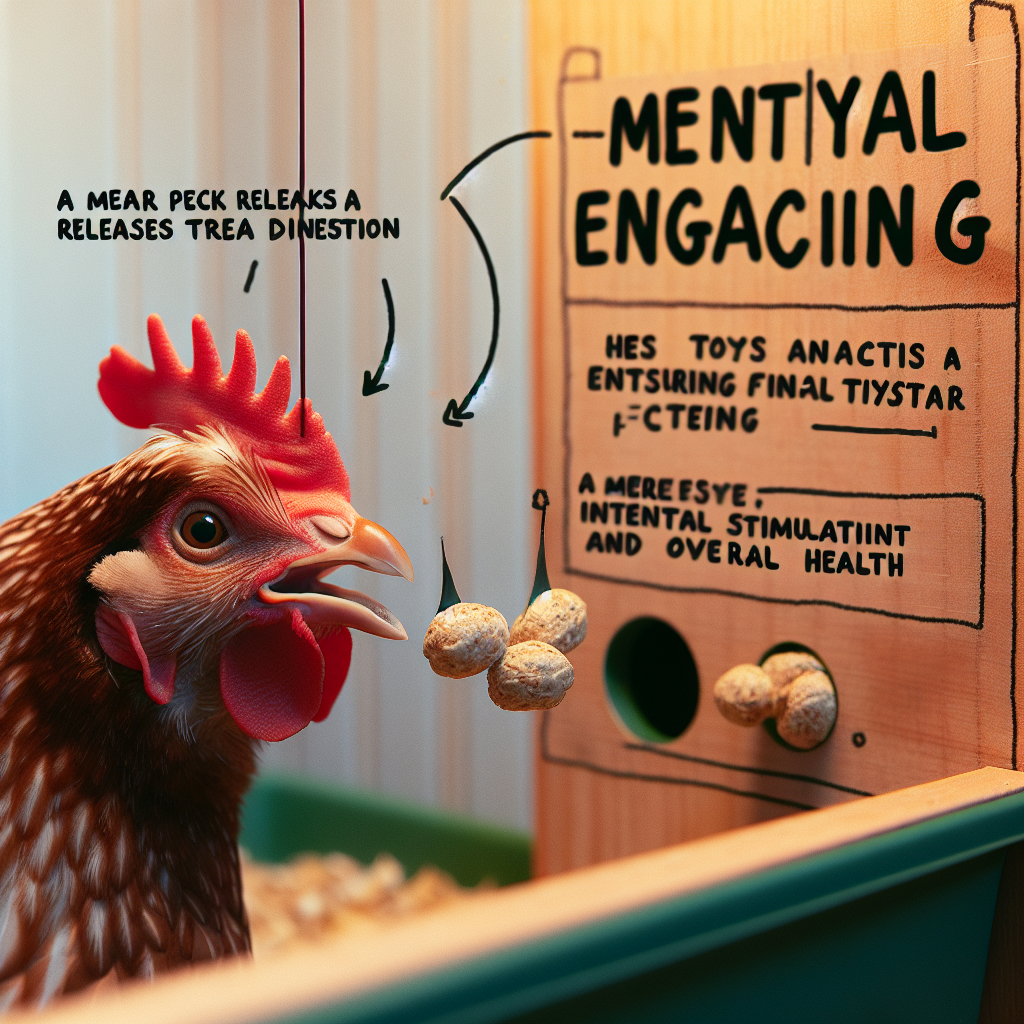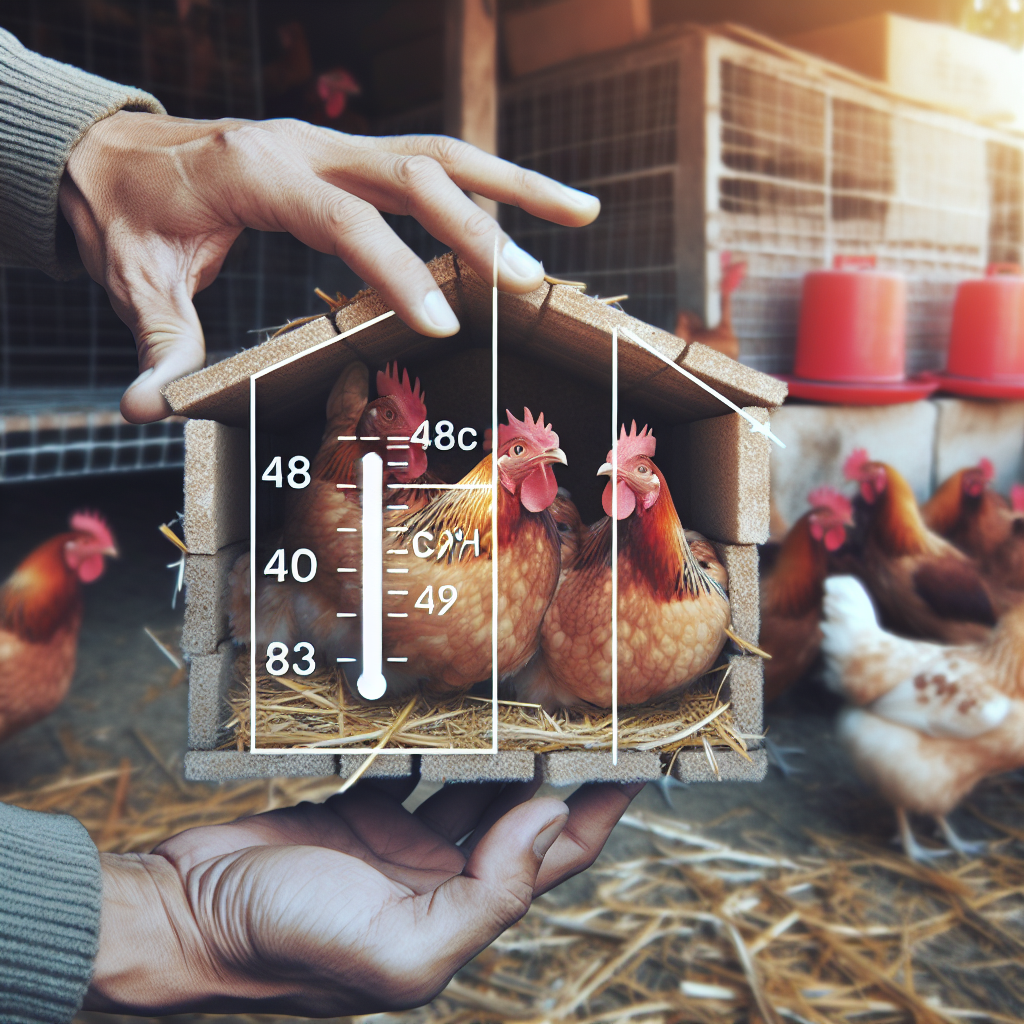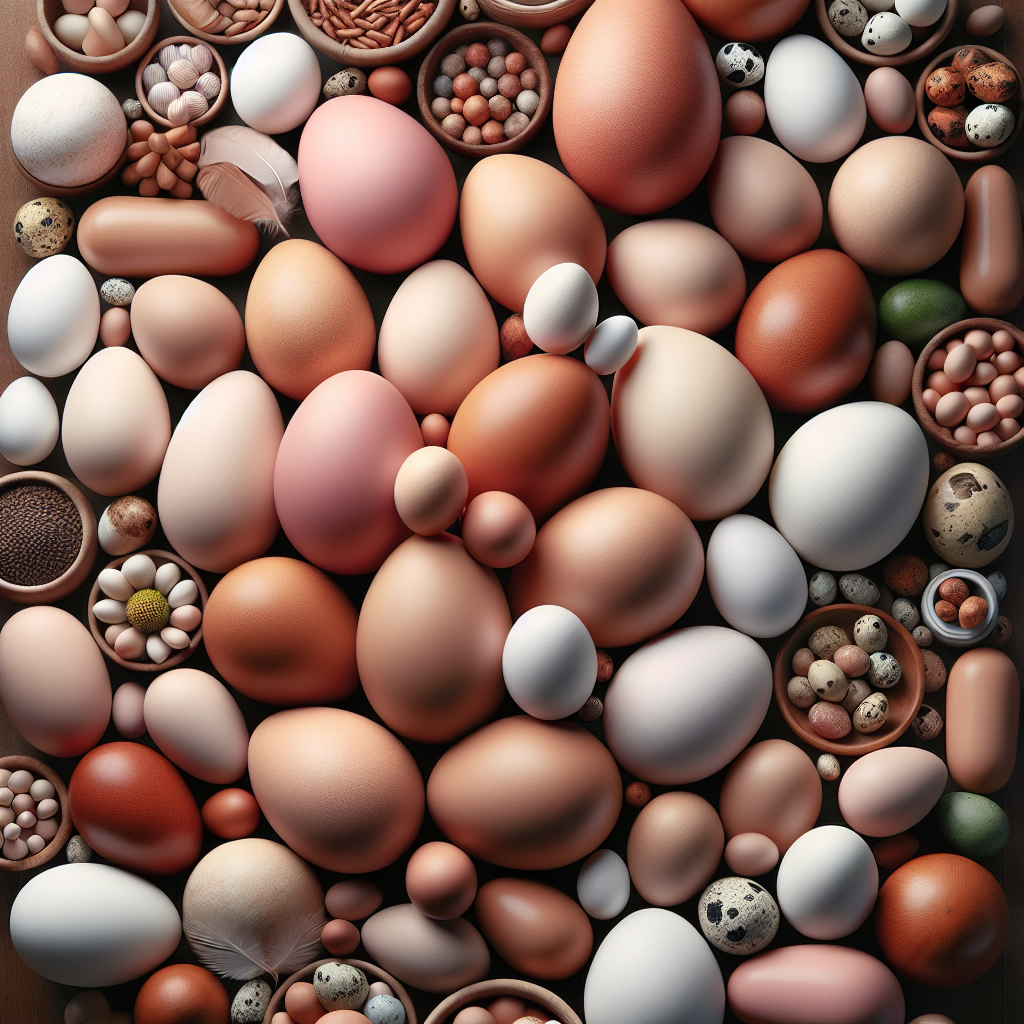Ever wondered if chickens need toys or activities for stimulation? Well, the answer might surprise you! Chickens are more than just simple barnyard birds, as they thrive on mental and physical engagement. Just like humans, they too require stimulation to be happy and healthy. So, whether you’re a farmer or a backyard chicken lover, it’s important to understand the significance of providing toys or activities for your feathered friends. In this article, we’ll explore why stimulating toys and activities are essential for chickens and how they can enhance their well-being. So, grab a cup of coffee, sit back, and let’s discover why chickens need more than just a cozy coop!
Importance of Stimulation for Chickens
Chickens, just like any living creature, require both physical and mental stimulation to lead happy and healthy lives. Providing them with toys and activities not only prevents boredom but also reduces stress and enhances their overall welfare. But why is stimulation so crucial for our feathered friends? Let’s explore the benefits in greater detail.
Physical and Mental Stimulation
Chickens are highly intelligent creatures that thrive when provided with activities that challenge both their bodies and minds. Engaging in physical exercise helps keep their muscles strong and promotes cardiovascular health. Mental stimulation, on the other hand, is just as important for their cognitive development and emotional well-being. By incorporating toys and activities into their daily routines, you can ensure that both their physical and mental needs are met.
Preventing Boredom and Stress
Imagine spending your entire day with nothing to do – no games to play, no puzzles to solve, and no companions to interact with. It sounds dull, right? Well, chickens are no different. When they lack stimulation, their minds become idle, which can lead to boredom and higher stress levels. Boredom can result in negative behaviors such as feather pecking, aggression, and even self-harm. By providing toys and activities, you can keep your chickens entertained, promote their natural behaviors, and ultimately prevent the onset of stress-related issues.
Benefits of Providing Toys and Activities
The advantages of providing toys and activities for chickens are numerous. Not only do they improve their overall welfare, but they also have a positive impact on their behavior and productivity. Let’s delve into these benefits further.
Enhances Chicken Welfare
Chickens, although domesticated, still possess instincts deeply rooted in their wild ancestors. Toys and activities simulate these natural behaviors, giving chickens a sense of purpose and fulfillment. They allow them to exhibit their natural pecking, foraging, and perching behaviors. By meeting these instinctual needs, you’re promoting their overall welfare and ensuring they lead fulfilling lives.
Reduces Aggression and Feather Pecking
Aggression and feather pecking are not uncommon in chicken flocks, and they can cause serious harm to individuals within the group. Providing the right toys and activities can divert chickens’ attention from engaging in harmful behaviors towards their flockmates. By redirecting their focus onto constructive and engaging activities, you can help reduce aggression and promote a harmonious and peaceful coop environment.
Improves Egg Production
Believe it or not, the provision of toys and activities can have a positive impact on egg production. It’s no secret that happy and healthy chickens lay better-quality eggs. When chickens are mentally and physically stimulated, their stress levels decrease, and their overall health improves. This ultimately leads to improved egg production, with eggs that are likely to have stronger shells and richer yolks. So not only are you benefiting the chickens, but you’re also reaping the rewards when it comes to the all-important morning omelet!
Types of Toys and Activities for Chickens
Now that we understand the importance and benefits of providing stimulation for our chickens, let’s explore some of the different types of toys and activities that can keep them occupied and entertained.
Foraging Toys
Chickens have a natural instinct to forage and search for food. Foraging toys are an excellent way to satisfy this behavior and keep your chickens mentally stimulated. You can purchase commercially available foraging toys or get creative and make your own using simple materials like a plastic bottle or an old muffin tin. Fill these toys with treats or their regular feed, and watch as your chickens peck and scratch to retrieve their rewards.
Perches and Swings
Chickens love to perch and swing, much like their wild counterparts who would use branches and trees to rest and sleep. Provide your chickens with perches and swings in their coop or outdoor area, allowing them to engage in these natural behaviors. Not only will they enjoy the physical exercise, but they’ll also be able to relax and observe their surroundings from a higher vantage point.
Mirrors and Reflective Objects
Believe it or not, chickens can be quite entertained by their own reflection! Mirrors and other reflective objects can provide endless entertainment, as chickens will be intrigued by their reflection and may even try to interact with it. Hang a small mirror or attach reflective objects to the wall of their coop, ensuring they are sturdy and safe for use.
Pecking Blocks
Chickens have a natural instinct to peck and scratch the ground, and providing them with designated pecking blocks allows them to engage in this behavior in a controlled and safe manner. These blocks are typically made from materials like wood or straw and can be hung in the coop or placed in their outdoor area. Not only will they keep your chickens entertained, but they’ll also help maintain their beak health.
Puzzle Toys
Puzzle toys are an excellent way to challenge your chickens’ cognitive abilities and keep their minds sharp. These toys typically involve the chicken having to figure out a mechanism or solve a puzzle to access treats or food. Whether it’s a simple box with holes or a more complex contraption, puzzle toys allow chickens to engage in problem-solving activities while rewarding them with tasty treats.
Choosing the Right Toys and Activities
When selecting toys and activities for your chickens, it’s essential to consider various factors to ensure their safety and enjoyment. Let’s take a look at some key considerations when choosing the right toys and activities for your feathered friends.
Durable and Safe Materials
First and foremost, the toys and activities you choose for your chickens should be made from durable materials that can withstand their pecking and scratching. Avoid toys that contain small or easily detachable parts that could pose a choking hazard. Opt for materials such as hard plastic or solid wood, ensuring they are free from toxic chemicals.
Variety and Rotation
Like any creature, chickens can get bored with the same toys over time. It’s important to provide them with a variety of toys and activities and rotate them regularly. This will keep them engaged and prevent the onset of boredom. By introducing new toys or swapping out existing ones, you can maintain their interest and ensure continued stimulation.
Size and Accessibility
Consider the size and accessibility of the toys and activities you choose. Chickens should be able to interact with them comfortably without any risk of injury. Ensure perches and swings are large enough to accommodate their feet, and that foraging toys and pecking blocks are placed at appropriate heights for easy access. By considering these factors, you can ensure that your chickens can fully enjoy the toys and activities provided.
DIY Chicken Toys and Activities
Creating your own chicken toys and activities can be a fun and rewarding experience, both for you and your chickens. Here are a few simple DIY ideas that you can try out:
Egg Carton Treat Dispenser
Save those empty egg cartons! Cut them into individual sections and fill each compartment with their favorite treats or regular feed. Close the carton, poke small holes on the top, and watch as your chickens peck and scratch to get their rewards.
Vegetable and Fruit Kabobs
Chickens love fresh fruits and vegetables, so why not create a kabob feast for them? Skewer pieces of their favorite produce onto a wooden dowel or a sturdy stick. Hang the kabobs from the roof of their coop or outdoor area, just within reach. Not only will they enjoy the tasty treats, but they’ll also have a great time picking at the hanging kabobs.
Dangling Feather Toy
Attach a vibrant and eye-catching feather to a string or piece of rope. Tie the other end securely to the roof of their coop or outdoor area, ensuring it hangs just above their reach. The sight of the feather swaying with the breeze will pique their interest, and they’ll spend hours trying to catch it.
Introducing Toys and Activities to Chickens
Introducing toys and activities to chickens should be done gradually to avoid overwhelming or frightening them. Here are a few steps to follow when introducing new toys or activities:
Gradual Introduction
Start by placing the new toy or activity in their environment without any immediate interaction. Allow your chickens to observe and investigate it at their own pace. This will help them become accustomed to its presence without feeling threatened. Once they have grown familiar with it, you can encourage them to interact and play.
Positive Reinforcement
Use positive reinforcement to encourage your chickens to engage with the toys and activities. Offer treats or rewards when they show interest or interact with the items. By associating the toys with pleasurable experiences, you’ll create a positive connection in their minds and increase their motivation to play.
Monitoring and Evaluating Toy Usage
Once your chickens have become comfortable with the toys and activities, it’s important to monitor their usage and evaluate their engagement and interest levels. Here are a couple of ways to assess their response:
Observing Chicken Behavior
Take the time to observe your chickens’ behavior when they are interacting with the toys and activities. Are they actively engaged, pecking, scratching, or problem-solving? Or are they disinterested and merely ignoring the items? By observing their behavior, you can gauge their level of interest and make adjustments accordingly.
Assessing Engagement and Interest
You can also assess their engagement and interest levels by noting how frequently they interact with each toy or activity. Are they consistently using certain items and ignoring others? This can help you identify their preferences and tailor their playtime accordingly.
Common Mistakes to Avoid
While providing toys and activities for chickens is incredibly beneficial, there are a few common mistakes to avoid to ensure their safety and enjoyment.
Overcrowding with Toys
It can be tempting to fill your coop or outdoor area with numerous toys and activities. However, remember that chickens need space to move around and socialize. Overcrowding with toys can lead to unnecessary stress and may even result in injuries or territorial disputes. Choose a few well-selected items and ensure there is plenty of space for your chickens to interact freely.
Using Inappropriate Materials
When selecting or creating toys and activities, make sure to use only materials that are safe and suitable for chickens. Avoid materials that can splinter or break easily, as these can pose a choking hazard. Additionally, ensure any paints or dyes used on the toys are non-toxic and chicken-friendly.
Neglecting Proper Maintenance
Toys and activities need regular maintenance to ensure they remain safe and functional. Check for any signs of damage or wear and tear, and replace or repair items as needed. Keep toys clean to prevent the buildup of dirt or bacteria, as this can pose health risks to your chickens. By properly maintaining their toys, you can ensure their long-lasting enjoyment and safety.
Conclusion
In conclusion, providing toys and activities for chickens is crucial for their overall well-being and happiness. By incorporating physical and mental stimulation into their daily routines, we can prevent boredom, reduce stress, and promote a harmonious coop environment. Remember to choose the right toys and activities, introduce them gradually, and monitor their usage to ensure maximum engagement and enjoyment. Whether you opt for commercially available toys or get creative with DIY creations, the benefits these stimulating additions bring to your flock are immeasurable. So go ahead, enrich your chickens’ lives and watch them flourish in their newly captivating environment!




